Abstract
The downward migration through soil of seeded poliovirus type 1 and echovirus type 1 and of naturally occurring enteroviruses during infiltration of sewage effluent through rapid-infiltration basins was investigated. After 5 days of flooding, the amount of seeded poliovirus type 1 that had migrated 5 to 10 cm downward through the soil profile was found to be 11% of that remaining at the initial burial depth. The amount of echovirus type 1 determined to have moved an equal distance was at least 100-fold less. Migration of naturally occurring enteroviruses during infiltration of sewage effluent through soil could not be measured with accuracy because of the possibility of virus survival from previous applications of effluent. The rate of inactivation for seeded poliovirus 1 and echovirus 1 buried in the infiltration basins ranged between 0.04 and 0.15 log10 units per day during the time when the basins were flooded. Inactivation of these same seeded virus types and of indigenous enterovirus populations in the infiltration basins during the drying portion of the sewage application cycle ranged between 0.11 and 0.52 log10 units per day. The rate of virus inactivation was dependent upon the rate of soil moisture loss. These results indicate that drying cycles during the land application of wastewater enhance virus inactivation in the soil.
Full text
PDF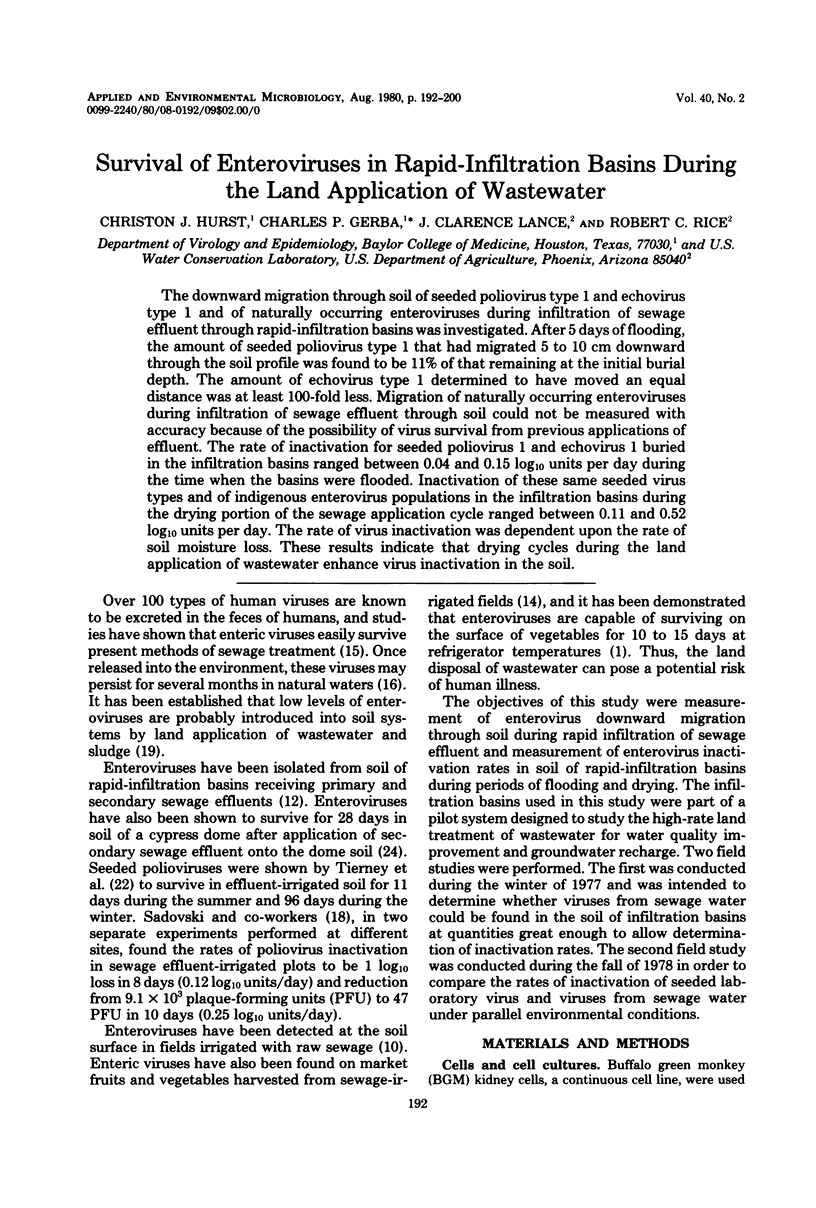
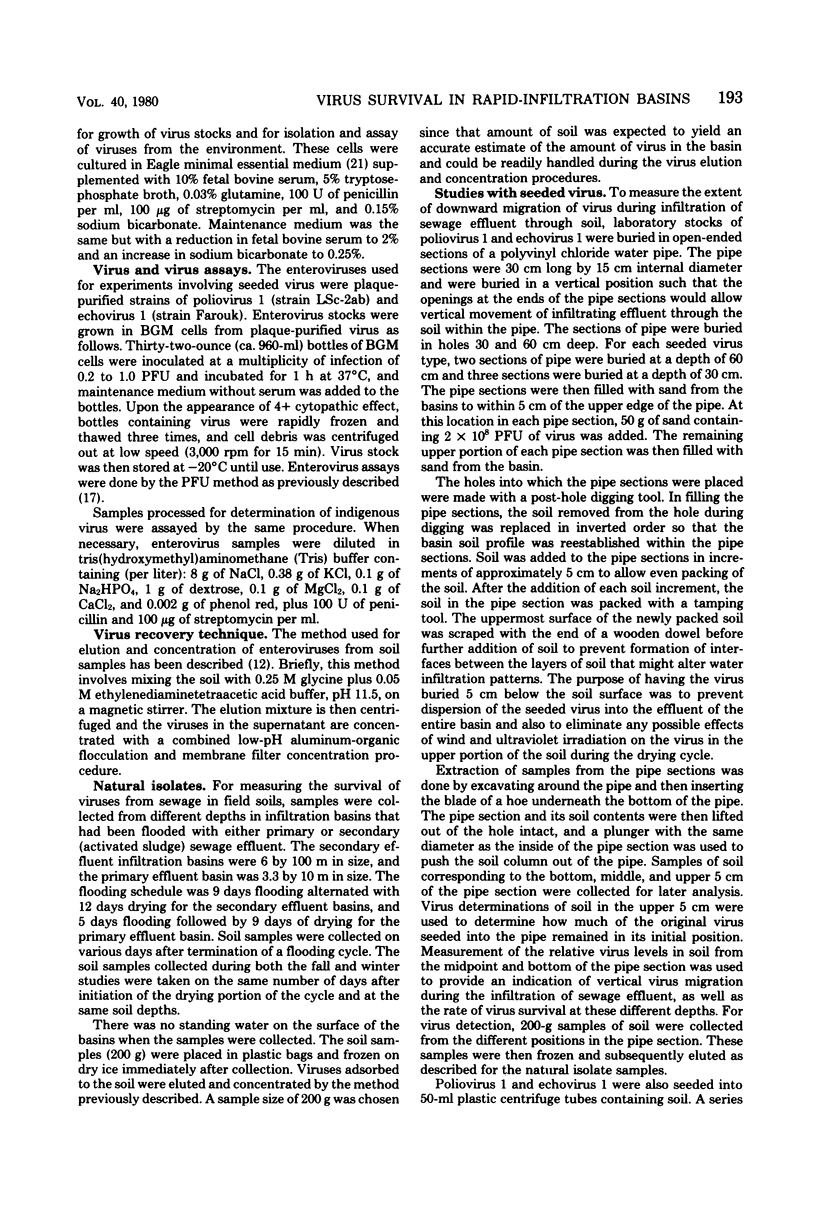
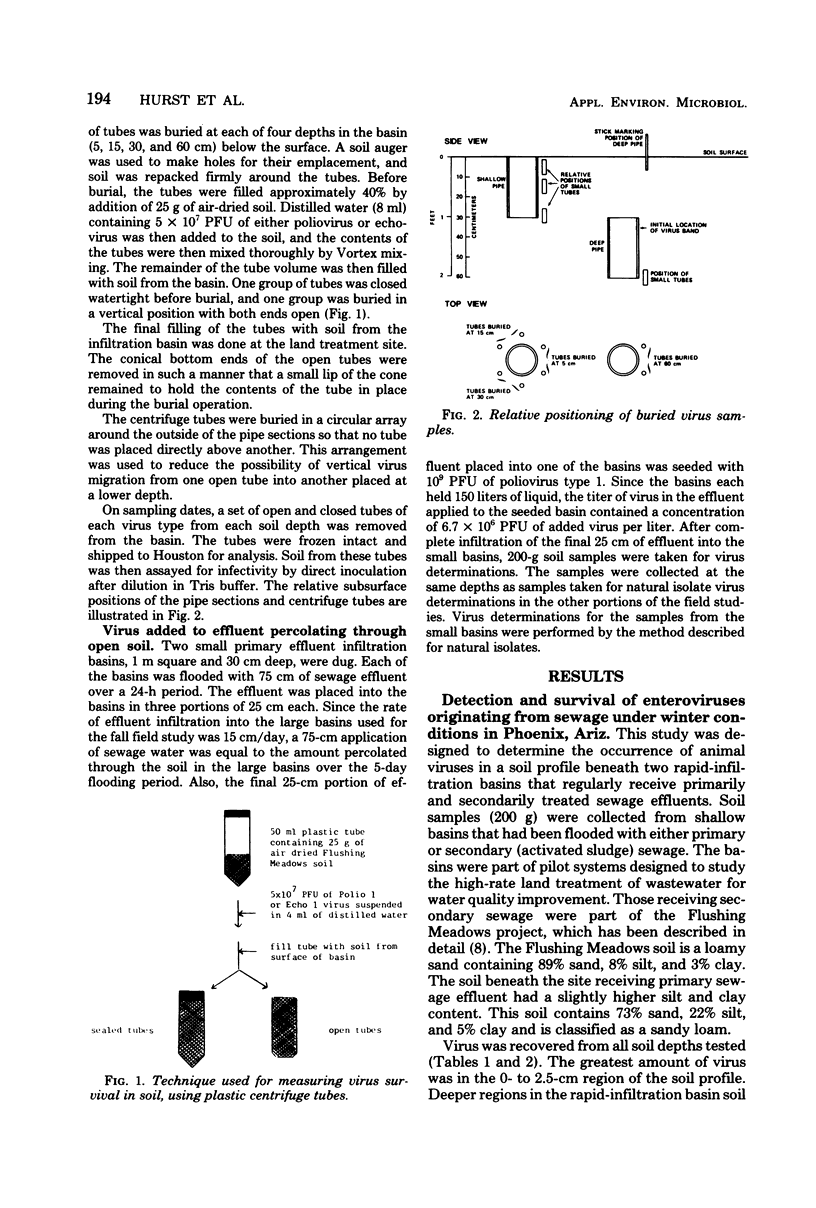
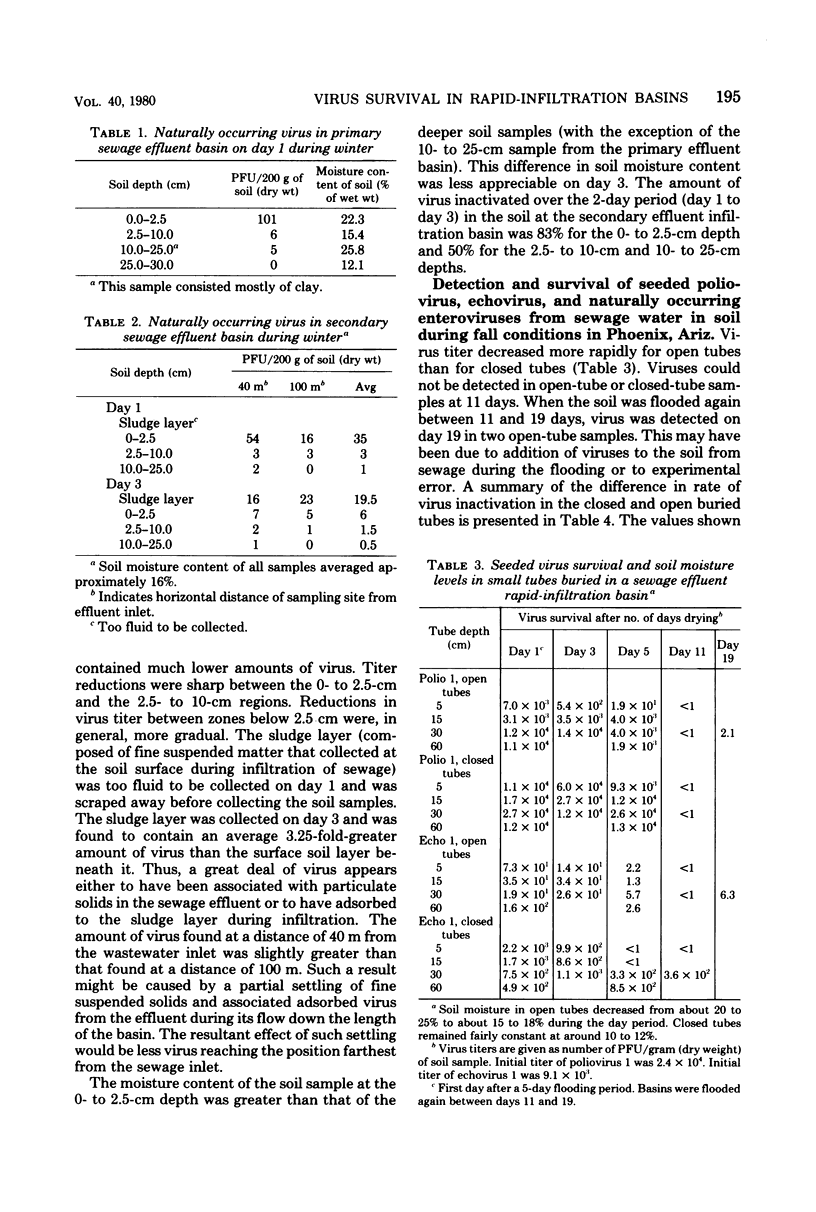
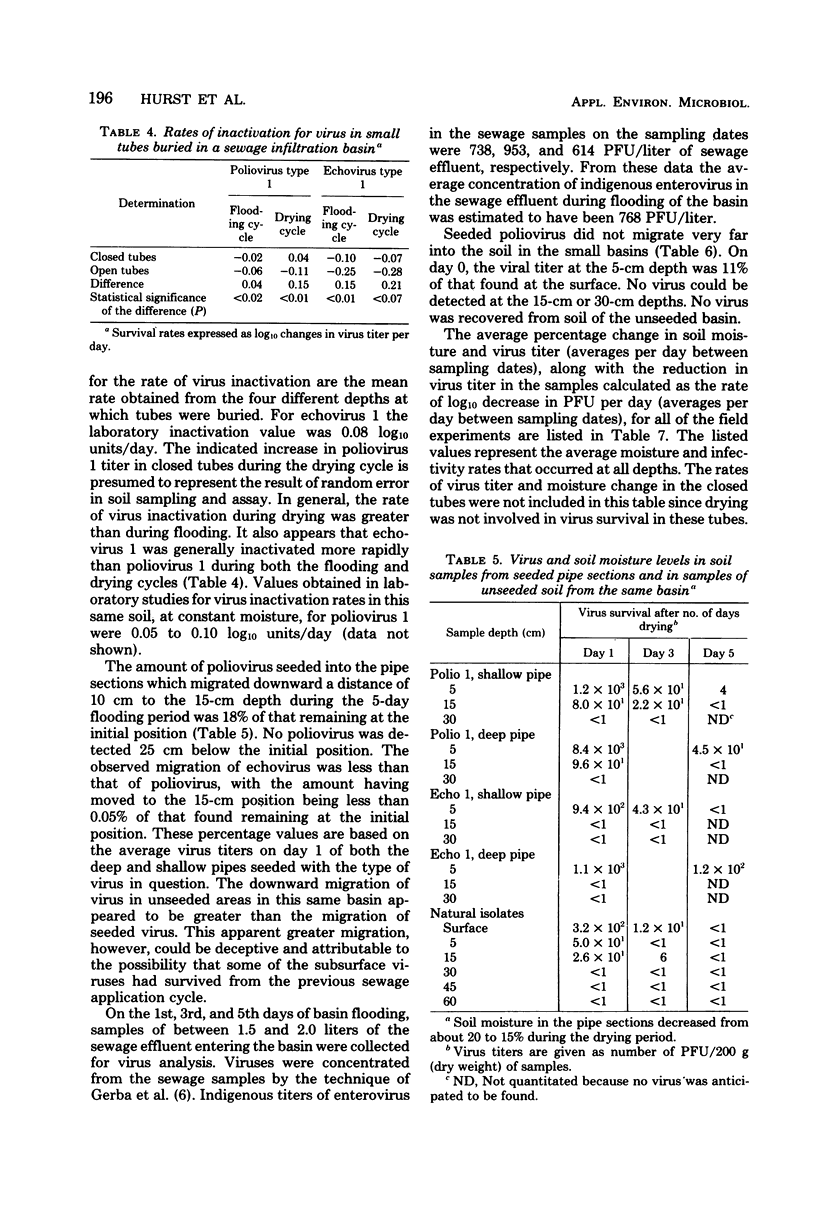
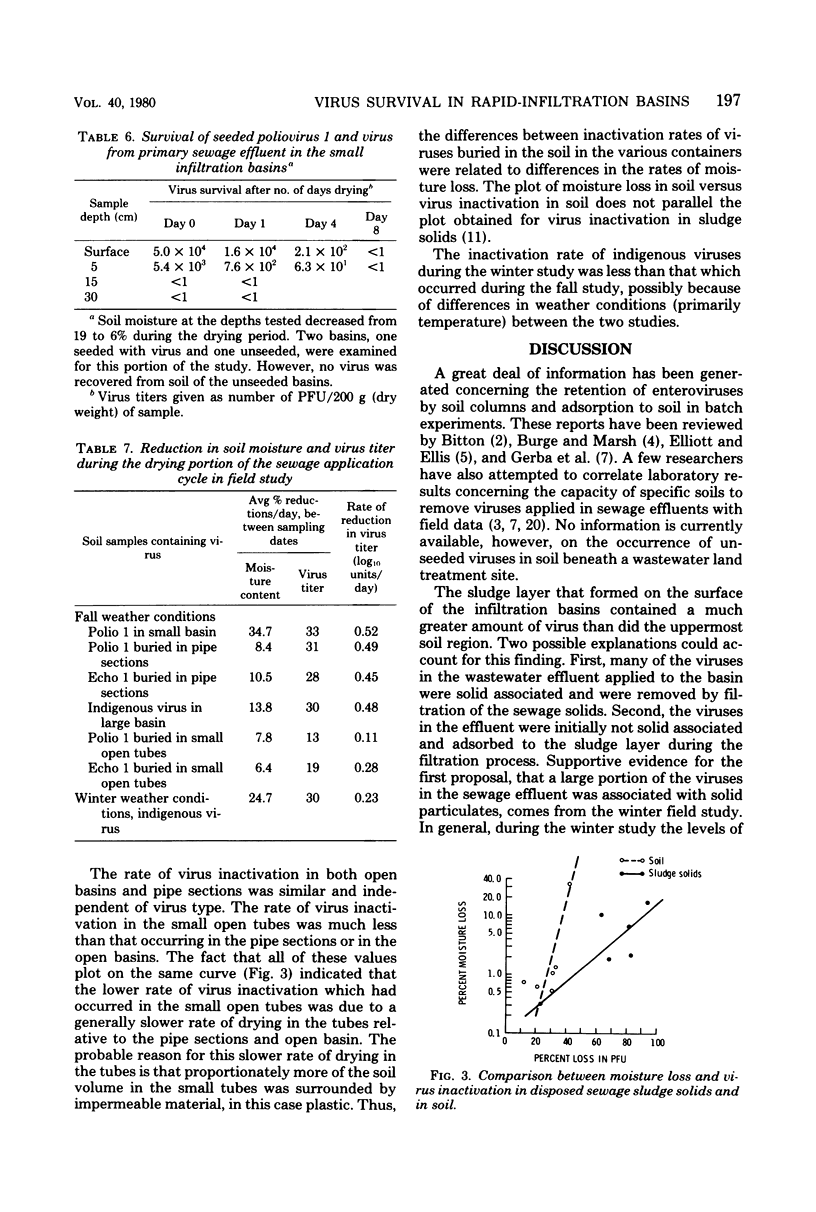
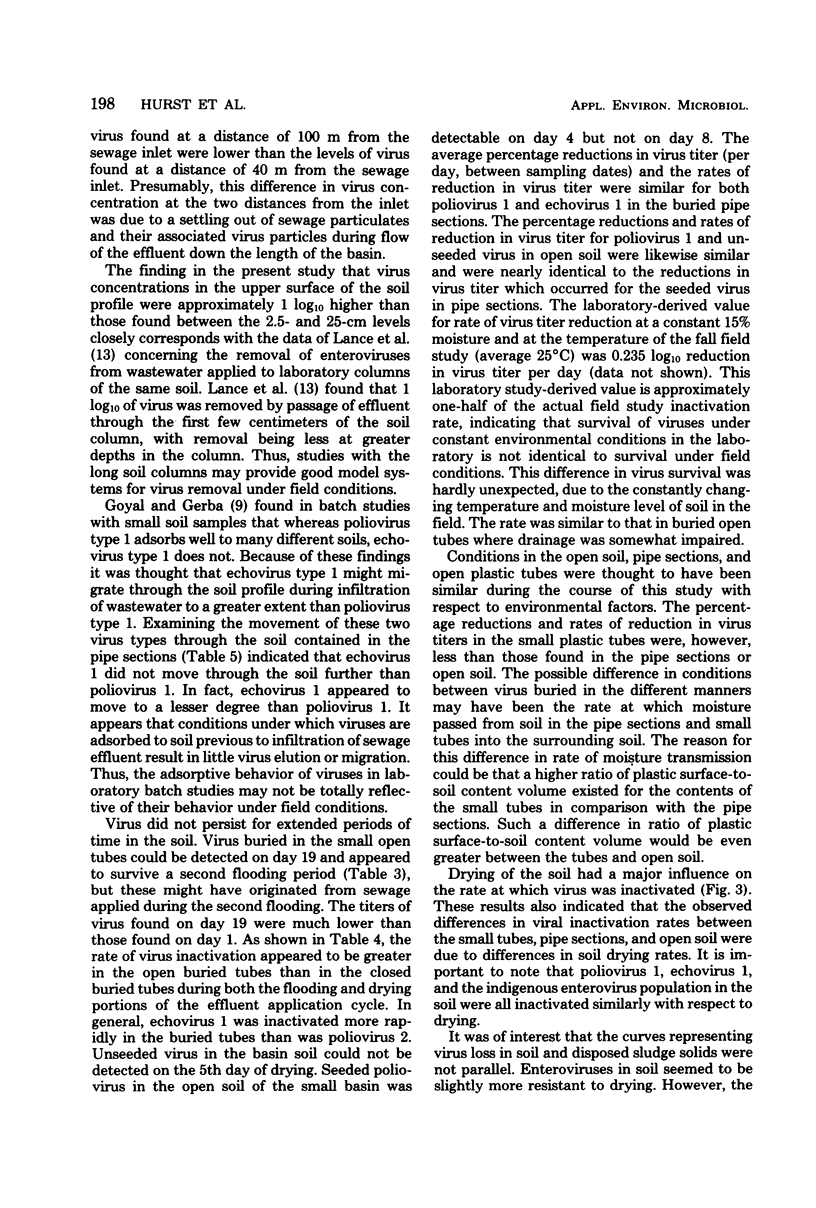
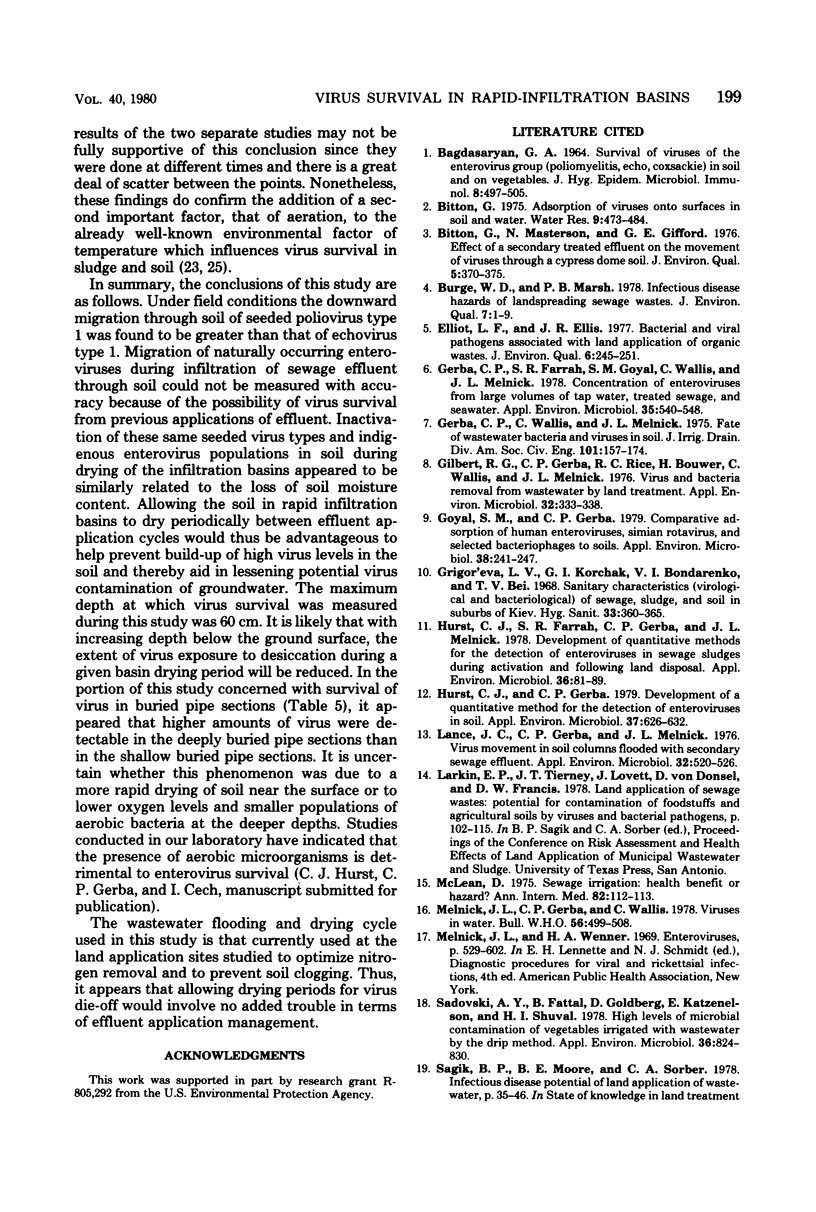

Selected References
These references are in PubMed. This may not be the complete list of references from this article.
- BAGDASARYAN G. A. SURVIVAL OF VIRUSES OF THE ENTEROVIRUS GROUP (POLIOMYELITIS, ECHO, COXSACKIE) IN SOIL AND ON VEGETABLES. J Hyg Epidemiol Microbiol Immunol. 1964;8:497–505. [PubMed] [Google Scholar]
- Gerba C. P., Farrah S. R., Goyal S. M., Wallis C., Melnick J. L. Concentration of enteroviruses from large volumes of tap water, treated sewage, and seawater. Appl Environ Microbiol. 1978 Mar;35(3):540–548. doi: 10.1128/aem.35.3.540-548.1978. [DOI] [PMC free article] [PubMed] [Google Scholar]
- Gilbert R. G., Gerba C. P., Rice R. C., Bouwer H., Wallis C., Melnick J. L. Virus and bacteria removal from wastewater by land treatment. Appl Environ Microbiol. 1976 Sep;32(3):333–338. doi: 10.1128/aem.32.3.333-338.1976. [DOI] [PMC free article] [PubMed] [Google Scholar]
- Goyal S. M., Gerba C. P. Comparative adsorption of human enteroviruses, simian rotavirus, and selected bacteriophages to soils. Appl Environ Microbiol. 1979 Aug;38(2):241–247. doi: 10.1128/aem.38.2.241-247.1979. [DOI] [PMC free article] [PubMed] [Google Scholar]
- Hurst C. J., Farrah S. R., Gerba C. P., Melnick J. L. Development of quantitative methods for the detection of enteroviruses in sewage sludges during activation and following land disposal. Appl Environ Microbiol. 1978 Jul;36(1):81–89. doi: 10.1128/aem.36.1.81-89.1978. [DOI] [PMC free article] [PubMed] [Google Scholar]
- Hurst C. J., Gerba C. P. Development of a quantitative method for the detection of enteroviruses in soil. Appl Environ Microbiol. 1979 Mar;37(3):626–632. doi: 10.1128/aem.37.3.626-632.1979. [DOI] [PMC free article] [PubMed] [Google Scholar]
- Lance J. C., Gerba C. P., Melnick J. L. Virus movement in soil columns flooded with secondary sewage effluent. Appl Environ Microbiol. 1976 Oct;32(4):520–526. doi: 10.1128/aem.32.4.520-526.1976. [DOI] [PMC free article] [PubMed] [Google Scholar]
- McLean D. M. Sewage irrigation: health benefit or hazard? Ann Intern Med. 1975 Jan;82(1):112–113. doi: 10.7326/0003-4819-82-1-112. [DOI] [PubMed] [Google Scholar]
- Melnick J. L., Gerba C. P., Wallis C. Viruses in water. Bull World Health Organ. 1978;56(4):499–508. [PMC free article] [PubMed] [Google Scholar]
- Sadovski A. Y., Fattal B., Goldberg D., Katzenelson E., Shuval H. I. High levels of microbial contamination of vegetables irrigated with wastewater by the drip method. Appl Environ Microbiol. 1978 Dec;36(6):824–830. doi: 10.1128/aem.36.6.824-830.1978. [DOI] [PMC free article] [PubMed] [Google Scholar]
- Schaub S. A., Sorber C. A. Virus and bacteria removal from wastewater by rapid infiltration through soil. Appl Environ Microbiol. 1977 Mar;33(3):609–619. doi: 10.1128/aem.33.3.609-619.1977. [DOI] [PMC free article] [PubMed] [Google Scholar]
- Tierney J. T., Sullivan R., Larkin E. P. Persistence of poliovirus 1 in soil and on vegetables grown in soil previously flooded with inoculated sewage sludge or effluent. Appl Environ Microbiol. 1977 Jan;33(1):109–113. doi: 10.1128/aem.33.1.109-113.1977. [DOI] [PMC free article] [PubMed] [Google Scholar]
- Ward R. L., Ashley C. S. Inactivation of enteric viruses in wastewater sludge through dewatering by evaporation. Appl Environ Microbiol. 1977 Nov;34(5):564–570. doi: 10.1128/aem.34.5.564-570.1977. [DOI] [PMC free article] [PubMed] [Google Scholar]
- Wellings F. M., Lewis A. L., Mountain C. W., Pierce L. V. Demonstration of virus in groundwater after effluent discharge onto soil. Appl Microbiol. 1975 Jun;29(6):751–757. doi: 10.1128/am.29.6.751-757.1975. [DOI] [PMC free article] [PubMed] [Google Scholar]
- Yeager J. G., O'Brien R. T. Enterovirus inactivation in soil. Appl Environ Microbiol. 1979 Oct;38(4):694–701. doi: 10.1128/aem.38.4.694-701.1979. [DOI] [PMC free article] [PubMed] [Google Scholar]


